Lithium Batteries: Evaluation of Recovery and Standardization Options
Info: 9650 words (39 pages) Dissertation
Published: 17th Feb 2022
Tagged: EngineeringElectronics
EXECUTIVE SUMMARY
Future Smart Grid electrical systems will maximize the potential of energy storage technologies including innovative battery storage systems. Current research on distributed scale battery storage systems focuses primarily on systems using lithium battery technology. [10] This research serves as a basic primer to provide education tool a basic understanding of the management of end of life batteries for those new to the topic. A review of the history and basics of lead acid batteries, as well as the fundamentals of waste management are reviewed.
Current IEC standards for battery nomenclature are designed to identify cell size and power for plug and play type used. A review of the literature shows a need for an easily implemented system for worker identification of spent cells. As EVs further penetrate the vehicle market [5.] a sharp increase in the volumes of lithium used in the manufacture of cells will be required. With limited volumes of raw lithium available in the market, a need for a process flow for recycling lithium from spent cells will be required. Recaptured lithium from used batteries is an experimental technology with the potential to provide high grade feed stock to new batteries. A repurposing of EV batteries in energy storage systems, and the fundamental need for a standardized identification system allowing visual identification of cell chemistry will serve as a base framework for recycling initiatives.
TABLE OF CONTENTS
Click to expand Table of Contents
LIST OF ABBREVIATIONS – Battery and waste management terminology & acronyms
INTRODUCTION
1. Background – History of Batteries
1.1 History and development of the battery
1.2 Battery Composition and Chemistry
1.2.1 The Lead Acid Battery – materials used in manufacture
1.2.2 The Lithium Ion Battery – materials used in manufacture
1.3 Basics of Waste Management
1.3.1 Principles of Reuse
1.3.2 Principles of Material Recycling
2. Review of Literature– Waste Battery, Repurposing Recycling
3. Overview – Programs and Standardization – Other Industries & Countries
3.1 Der Grüne Punkt (Germany) and the Mobius Loop
3.2 Transportation of Dangerous Goods (Canada)
3.3 Stewardship Ontario
4. Electric Vehicle Industry and Secondary Uses of EV batteries
4.1 Battery Repurposing
4.2 Nissan Green Charge
5. Standardization for Recycling and Material Recovery
5.1 Labeling systems in the battery recovery industry
5.2 RFID
6. Technical Limitations
DISCUSSION AND CONCLUSION
REFERENCES
LIST OF TABLES
Table 1. Comparison of Battery Materials
LIST OF FIGURES
Fig. 1. Waste consumer dry cell batteries
Fig. 2 Spent lead acid batteries awaiting recycling
Fig. 3 Health hazard warning lead acid battery
Fig. 4. Mixed spent lithium ion batteries
Fig. 5. Der Grune Punkt
Fig. 6. Mobius Loop
Fig. 7. Transportation of Dangerous Goods Labels
Fig. 8. Total Canadian EV Sales (Fleetcarma)
Fig. 9 Nissan LEAF
Fig. 10. Proposed Recycling Process Flow
Fig. 11. Post-Consumer Mixed Lead Acid Batteries
Fig. 12. Lithium Battery Management Process Flow
LIST OF ABBREVIATIONS – List of Key Terms and Abbreviations
- BEV – battery electric vehicle
- Capacity loss – battery can not be charged to reach full capacity and in terms of EV, that point where the potential range of travel for the vehicle is substantially reduced
- Closed loop system – A recycling system that manages materials from initial manufacture to right through consumer use and manages post consumer recycling with an ultimate goal of zero waste being produced through the entire system
- Comingle – waste management term use to denote mixing of dissimilar waste types
- Cost benefit analysis – an economic approach that weighs the benefits vs costs and assigns values to each as a decision making tool
- Energy storage system – system that stores energy for future use, batteries are one example
- EV – Electric vehicle – current standard employs rechargeable lithium ion battery system
- IEC – International Electrotechnical Commission
- Life cycle analysis
- Lithium – a basic element found on the periodic table
- LIB – Lithium Ion Battery(ies)
- MRF – material recovery facility
- PHEV – plug hybrid electric vehicle
- Recycle – the process of de-manufacturing an item back into its constituent material parts
- Reuse – the process of reusing an item, in particular a secondary type use
- Remanufacture – the process of renewing an item and returning it to the market in as new condition
- RFID – Radio frequency identification device – a small electronic tag that can store critical information and can be read remotely
- Secondary use – after fulfilling its primary use, a material is then reused in an alternate form
- SLI – starting, lighting, ignition
1. INTRODUCTION
1.1 Background – Batteries: Past, Current and Future
The newly emerging electric vehicle market presents daunting new environmental management challenges and opportunities. Touted for their low carbon emissions and eco-friendly nature, the battery systems in EVs deliver clean zero emissions transportation yet the very systems that make EVs clean and eco-friendly are an environmental management problem that is often overlooked when discussing electric vehicles. To be better equipped to understand the specific environmental management challenges battery packs present, a background section will provide reader with basic foundation information on waste management and the basic design principals of electric mobility batteries.

Fig. 1. Waste consumer dry cell batteries – C. Cook 2017
1.1.1 History and development of the battery
When discussing batteries, most people immediately think of the small, disposable consumer dry cell batteries [Fig 1.] that power simple everyday household items like remote controls. This small electrical wonder stated when Alessandro Volta documented the first demonstrated the concept of storing of energy chemically in a battery cell for later use as electrical energy in a rudimentary battery known as a voltaic pile in 1800. The voltaic pile used metallic disks of the dissimilar metals silver and zinc, with a separator of salt (brine) soaked fabric between the discs. [28.] This simple demonstration was definitive proof that an electric charge could be produced and current would flow through the pile. Volta’s basic concept of battery cell was further developed with substantial improvements on the basic idea as well as the chemistry and packaging. French Physicist Gaston Planté devised the lead acid battery in 1859. Camille Faure further refined the lead acid cell in 1880 taking Planté’s concept and making it a viable commercial product capable of mass production allowing rechargeable power to be available for portable devices.
Quickly adopted by the automotive industry, twelve-volt lead acid batteries are currently the industry standard used for starting, lighting, ignition (SLI) systems in gas power vehicles. [10.] Lead acid batteries have a well-established collection and recycling infrastructure system. One of the most effectively recycled materials in any industry, lead acid batteries and have been routinely captured for recycling due to their large lead content. On average, a single passenger vehicle SLI battery contains approximately 8kg of lead. [10.]
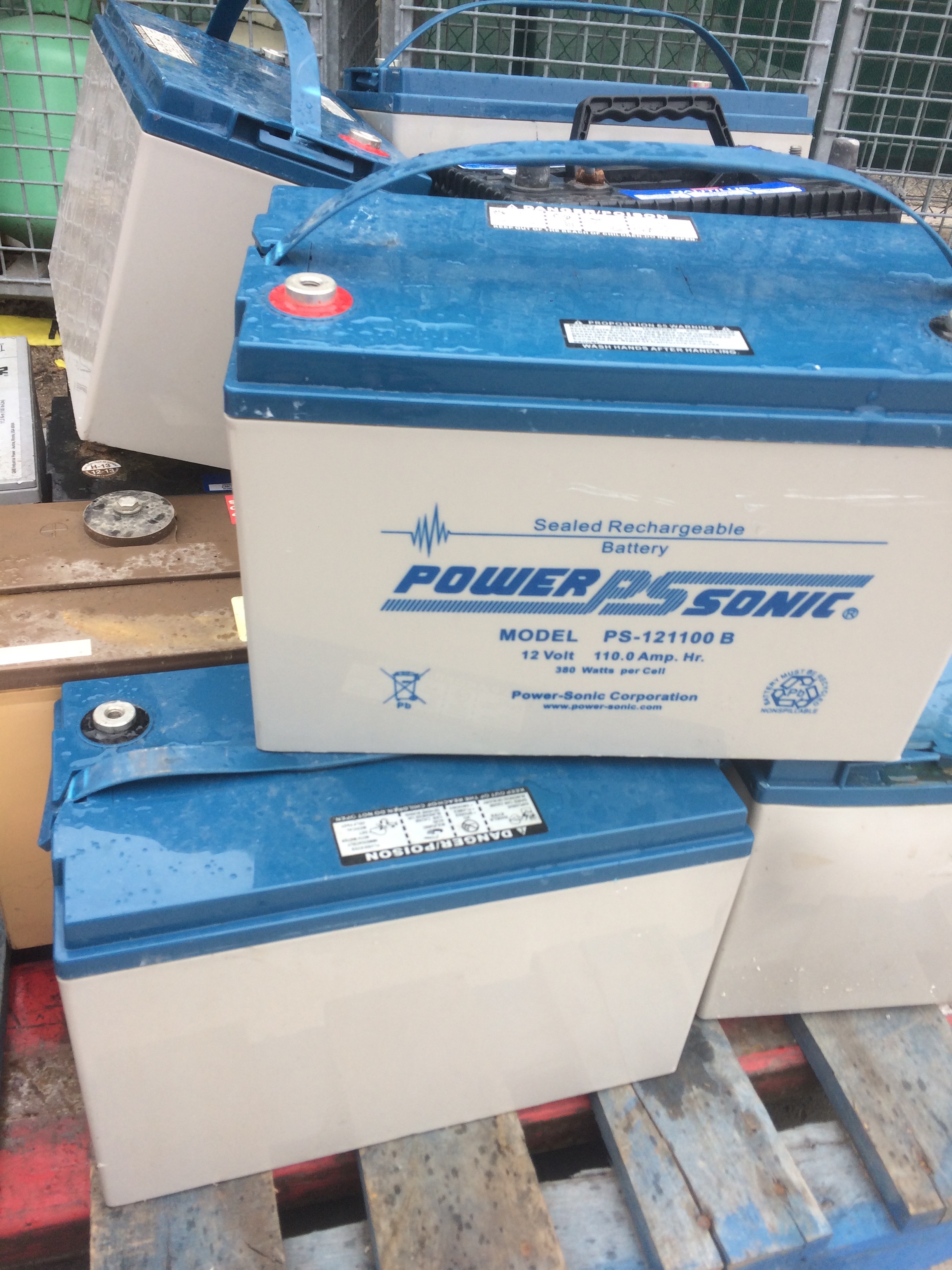
Fig. 2 Spent lead acid batteries awaiting recycling – C. Cook 2017
Carbon emissions and climate change are pushing the paradigm shift to manufacturing passenger vehicles with lower tail pipe emissions, such as PHEVs as well as the development of zero emission BEVs. A key resource in this shift is the base metal lithium, which is a primary material in the chemistry of light weight, high impact lithium batteries. [25.] Largely mined in remote regions of South America, lithium and is increasingly viewed and as a cutting edge component of energy storage systems. Advancements in lithium ion cells and battery packs have allowed an increasing penetration of electric vehicles into the passenger automobile market. Spent lithium cells and battery packs present a new waste management problem, similar the management issues of used lead acid batteries, yet with a significantly increased complexity due to their advanced designs and electronics. [10.]
1.2 Battery Composition and Chemistry
All batteries share some inherently similar structure properties, however, their chemical composition can vary widely. [10.] To better understand the management of used batteries; a review of the material make up and material composition of each lead acid and lithium ion batteries is outlined below.
Tabe 1 . Comparison of Battery Materials (adapted – Gains)[10.]
| Material | Pb | Li-ion |
| Cell | PbOPB | LiMO2 |
| Cathode | Pb | Al |
| Cathode Plate | Pb | Graphite |
| Anode | Pb | Cu |
| Electrolye | H2S04 | Organic Solvent
LiPF6 |
| Separator | PE | PE/PP |
| Cell Case | PP | Varies / Metal or Laminate |
| PE = polyethylene, PP= Polypropylene | ||
1.2.1 The Lead Acid Battery – materials used in manufacture
The main component of lead acid batteries is the base metal lead; represented as Pb (atomic number 82) on the period table. [29.] Due to its abundance in the earth’s surface, lead is a low cost material with many beneficial properties including a low melting point and low oxidization properties. The US Geologic Survey estimates worldwide reserves of lead to be in excess of 2 billion tons as of 2016.[29.] It is estimated by the USGS, that 95% of lead use in the US is used in the production of lead acid batteries. Lead from batteries can be easily returned to its elemental form. [10.] Historically lead was used an additive in paint and gasoline because of its softness and malleability. However, due to its highly toxic properties, lead use is restricted in most consumer products. Despite its many material benefits, the environmental and health effects of lead exposure are well documented in the research literature as a known neurotoxin causing nervous system damage in mammals. [16.]
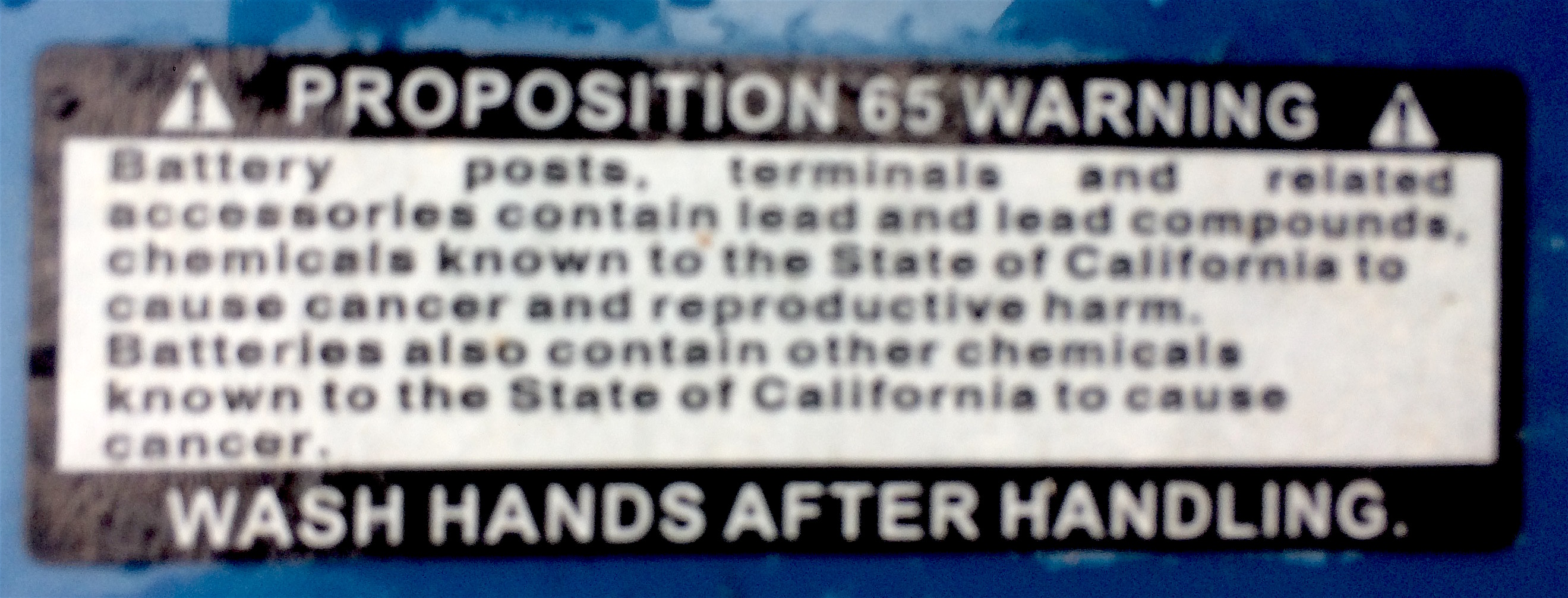
Fig. 3 Health hazard warning lead acid battery – C. Cook 2017
The basic components of a lead acid battery are outlined in Table 1 above. The lead from waste lead acid batteries is primarily recovered through a smelting process [16.]whereby the metals are melted and recovered for future use. The lead smelting process is a well-documented public health concern. [10.] Lead use is governed by stringent environmental protection laws, an example of California labeling requirement can be seen in [Fig. 3]. Due to varying jurisdictional environmental laws, Mexico provides the majority of lead recovery through the smelling process within continental North America. Only 5 such exist in facilities in Canada, while over 25 such facilities clustered in central Mexico. Lloyd et al [16.]. The need for import and export controls as well as public health and safety controls was a key finding of this study. Some jurisdictions have enacted deposit legislation, requiring consumers to pay deposit upon purchase to ensure lead acid batteries are returned and recycled.[10.]
1.2.2 The Lithium Ion Battery – materials used in manufacture
The reactive alkali metal lithium, Li on the periodic table (atomic number 3) and is the lightest metal known.[29.] This unique property makes highly desirable and suitable for high energy, light weight applications making lithium batteries highly desirable in the EV market. [29.] Lithium is used in either a salt form as either lithium carbonate (Li2CO3) or lithium hydroxide (LiOH). Unlike lead, lithium rapidly oxidizes when exposed to air and is highly flammable when exposed to moist air making lithium fires extremely dangerous. Lithium has a high fire and explosion risks and lithium fires cannot be extinguished with traditional water fire fighting techniques. [29.] Due to its unstable nature it is never found in its elemental form in nature.
Sporadically found around the globe, it is estimated that 70% of the earth’s lithium is found in deposits in the lithium triangle of South America bounded by Argentina, Bolivia and Chile where mining and production are hindered by the geology and remote geography of the deposits. [29.] The US Geologic Survey estimates that the largest deposits of lithium are in Chile (7.5 million tons), in China (3.2 million tons) with a worldwide reserve of approximately 14 million tons. Furthermore, the USGS estimates that approximately 39% of the lithium mined in 2016 was used in the production of rechargeable batteries. [29.]
Lithium is considered a scarce metal geologically and is generally found in salt flat areas where salt brine is naturally occurring. Given its unique geological properties, lithium extraction has some significant environmental impacts, as does the emission of waste lithium into the ecosystem. Much like lead, lithium is known to be toxin.[27.] A study on behalf of the European Union found that lithium has severe bio-accumulative neurotoxic effects of aquatic species, and, in particular fresh water fish.[27.]
John Goodenough from the University of Texas at Austin, is widely credited for the development of the rechargeable lithium ion battery in the 1980s. Lithium batteries are lightweight and allow for thousands of charging cycles before reach the end of their service life [17.]. Through the development of lithium cells, a revolution in the personal electronics industry was enabled. Small size, light weight batteries capable of hundreds of charge/discharge cycles were used in an ever-increasing number of small personal devices such as cell phones and rechargeable power tools and revolutionized these devices over the last 20 years. [22.] A similar scale revolutionary change is anticipated in the passenger vehicle market which will see a dramatic increase in the need for lithium for new batteries as well as a resultant need for an effective waste management system for waste lithium cells and battery packs. [10.] The diversity in material components in lithium batteries, complicates the material recovery and recycling process.
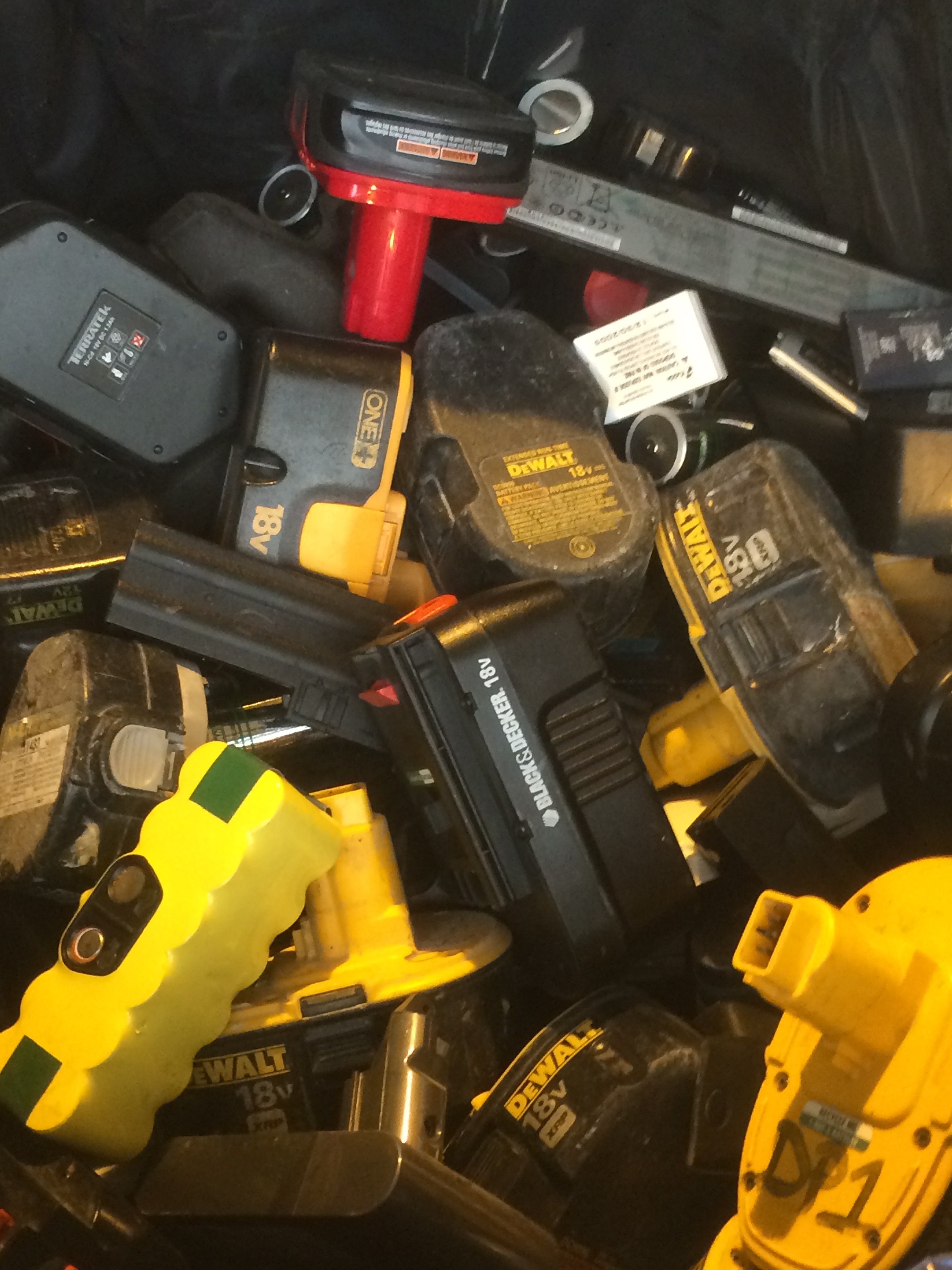
Fig. 4. Mixed spent lithium ion batteries. C. Cook 2017
A typical EV vehicle capable of ranges over 100 miles require a battery pack that weighs in at approximately 500kg. A battery of that size contains approximately 12.7 kg of premium EV quality lithium. [10.] Lithium cells are compromised of many different valuable metals, including copper and aluminum the anode [Table 1.]
1.3 Basics of Waste Management
The governing concept of solid waste management is to prevent damage to the natural environment and any resultant health effects in humans while safely disposing of unwanted materials. One of the guiding principals of waste management is the promotion of the circular economy. [23.] The concept of a circular economy takes a cradle to grave approach for goods in the economy. Expanding on the basic waste management hierarchy principles of reduce, reuse, recycle and recover and extending the responsibility of manufacturers to end of life management of the goods they produce. This basic premise is integrated with source reduction of waste at manufacture as well as reusing and repurposing materials where ever and when ever feasible. The second last tier of the process hierarchy is to recycle materials, recovering the basic materials of the composition. [14] Only after these steps have been followed, and no viable recycling or reuse opportunities have been identified for an item, then final disposal such as landfill or incineration is considered.
Many end of life materials are disposed of by consumers and end up in sanitary landfills or incinerated. Both of these options have potentially severe environmental impacts. Land and watershed pollution is an impact of landfill where leachate can contaminate the surrounding soil and water resources the ecosystem. [14.] Landfills also produce methane(CH4,) through the process of organic decomposition. Methane is a powerful green house gas, several orders of magnitude worse than CO2. Incineration impacts air quality often-emitting hazardous volatile organic compounds and heavy metals into the air.[14.] While Canada has stringent environmental protection laws to monitor emissions, incinerating municipal solid waste is never a zero risk operation.
1.3.1 Principals of Reuse
In the waste management hierarchy of basic principals of reuse promotes the reuse of durable goods, reintegrating them back into useful life. This simple concept can be employed for many goods. A simple example is an antique store, where items are repurchased by secondary consumers. Goods can also be redeployed into other secondary uses other than those for which they were originally manufactured. These secondary uses are often innovative and add value to an item that would normally become part of the waste stream being either landfilled or incinerated. Secondary uses may include further processing to alter an item to prepare it for its second life. Used passenger tires [5.] are an excellent example of items that are routinely used for secondary uses and are often shredded and formed into products like playground matts and garden pavers.
1.3.2 Principals of material recycling
The concept of recycling a material is one of the last stops on the waste management process chain. [14.] When an item is damaged beyond repair and no longer has any viable secondary uses, recycling allows for the potential to recapture the raw materials it is comprised of. Recycling allows for the raw materials of a product to be used again in the manufacture of new goods. Being able to recapture valuable raw materials lowers environmental risks associated end stage waste management strategies such as landfill and incineration lowering green house gas emissions and lowering energy inputs required for mining of new raw materials. Large collection companies and government agencies sell many recyclable materials, in particular metals, on commodity markets for a profit and use proceeds to fund further program research and development. Clear bottle glass is almost infinitely recyclable into new bottles requiring less energy and raw resource materials than manufacturing new virgin glass.
The remanufacturing of an item as part of the recycling process can be a complex process. While purpose built material recovery facilities (MRF) have been built to automate a large portion of many recycling systems, a large part of the material separation process is conducted by manual labourers. [16.] Manually sorting toxic materials or otherwise in hazardous materials, increases material handling risks and the adds costs to the sorting of volatile, unstable materials.
2. Review of Literature– Waste Battery Management, Repurposing Recycling
For over 100 years, automobiles with internal combustion engines have relied on 12 volt lead acid batteries for their ignition systems. The life cycle management of lead acid batteries is a well documented process capturing, and recycling almost 100% of the batteries in use at the end of life [16.]. With advances in EV technology, lithium ion batteries are now an essential component of electric vehicles. A review of the literature on lithium ion technology as well as EVs reveal that several studies, [5, 9, 10, 20,21, 22, 32.] have highlighted the end of life waste management issues with lithium ion batteries from EVs.
Unlike lead acid battery recycling, the real world recycling and remanufacturing potential of lithium ion batteries is largely unknown. A study on the potential of lithium ion battery reuse and remanufacturing was conducted by Foster et al in 2014[9.] The study highlights the unknowns of used battery management. A cost benefit analysis of the feasibility of both reusing and remanufacturing lithium ion cells is presented. End of life battery recycling for cells that are deemed unfit for any other option is examined. Battery recycling focuses on the material recovery of the commodity metals that comprise a cell.
Taylor (2009) [26.] examines the notion of scarcity of the lithium supply in a US centric context. The concept of recycling lithium from automotive sources to supply future demand for new batteries is the key purpose of this article. Eighty-five percent of the worlds lithium supply is minded from sources in Bolivia, Chile and China with a very small amount minded in the US, primarily in the Nevada desert.
The potential process flow of end of life lithium and nickel metal-hydride battery recycling systems is based off the model of lead acid batteries. The economics and sustainability of such a system are the primary focus of the study by Gains [10.], which closely examines the time lag leading up to, increased end of life batteries entering the waste management industry. The study pays close attention to the long life cycle of lithium ion batteries. A review of the metal commodity material components of batteries as well as hazards associated with recycling each battery type is outlined. Issues at the smelting level are also considered by Gains [10.]. Most importantly, Gains supports the need for further study on battery standardization for simplification of end of life management.
The environmental impact of electric vehicle batteries and the environmental impact of lithium batteries with a specific focus on the life cycle analysis electric vehicle batteries were studied by Notter et al [20.]. As a basic element, lithium is valued for its low weight and high electo-conductivity making it an idea material for vehicle batteries. The various types of metals used of anodes and cathodes are examined. BEVs are compared and analyzed against conventional combustion vehicles giving specific consideration to the battery’s impact in BEVs. The study concluded that BEVs have less environmental impact than conventional gas powered vehicles.
A review of the history and types of battery types in vehicles focusing on lithium ion technology is examined in a 2017 study by Pehlken. [22.] A forecast is provided for the future demand for electric powertrains. Annual lithium demand between now and 2050 is projected to be from a low of 43,000 tons to a high of 2 megatons. The need for catch up of the recycling industry technology to catch up to electronics industry is necessary to accommodate future growth in the EV sector.
Ordoñez et al examine current (2015) [21.] lithium ion battery recycling methods and technologies including various chemical and mechanical processes and their overlap in thermal and mechanochemical treatment. A highly detailed review of the chemical processes involved is highlighted. The author’s conclude that further research into the recovery of graphite be examined as well as advancing research on micro-organisms employed in bioleaching.
Ahmadi et al [1.], examine the potential of repurposed electric vehicle battery packs for use as energy storage units at the utility level. A life cycle analysis of electric vehicle batteries reveals the potential for some EV cells to have a secondary use in stationary battery storage units. A EV battery in a vehicle application is estimated to have a life cycle of approx. 8 years and after some refurbishing an additional 10 year life span in a secondary storage device at which point, the until would be recycled to recover is constituent materials. Battery fade and its impact on secondary EV battery installations are taken into consideration.
Zeng et al [32.] introduce lithium ion battery recycling by outlining the structure and configuration of the battery and then look at deconstruction through pretreatment and secondary treatment. At time of publishing the authors’ estimate, that LIB waste is annually estimated at 200–500 million metric tonnes. Concerns about worker health and safety as well the over all environmental impact of LIB are discussed. Residual power in discarded batteries is poses one of the major risks to anyone handling used lithium ion batteries. The authors’ conclude that a pressing need for legislation governing the management of lithium batteries is required to effectively manage the recycling and sorting of spent batteries. In a follow up study, spent batteries entering the municipal solid waste stream in China and the urgent need to assess, the associated environmental risks are the primary focus of this article. As of the date of publication, the authors’ highlight the fact that there is no end of life management for lithium ion batteries in China. To effectively manage batteries, sorting by chemistry is necessary which also results in a higher quality recycling output. The authors’ conclude that the current processes for recycling waste batteries are time inefficient and post risks to workers. They propose that legislation in China be enacted to govern the management of end of life lithium ion batteries to ensure eco-friendly life cycle management.
A dissertation publication by Wang in 2014 [27.], this research encompasses a comprehensive look at both the environmental and economic impacts of managing end life lithium ion batteries. The comingling (mixing) of cathode materials types from manufacturing differences is highlighted as an economic barrier for recycling as well as the comingling of batteries left in electronic waste (i.e. cell phone in e-waste with battery left in). Material Safety Data Sheets (MSDS) data were used to analyze battery composition. As of date of publication, a comprehensive end of life lithium-ion battery management system did not exist. A further study on the preprocessing of batteries prior to recycling is the focus of the study by Wang et al in 2016. [27.] Recycling technologies focus on shredding and sorting methods to extract materials. Lithium batteries are a fire hazard if crushed or handled improperly thus requiring more careful planning prior to recycling. In addition, cathode and casing materials are viewed as proprietary information by most manufactures thus making proper identification material composition more difficult. The study concludes that low cost, automated recycling systems will be required to handle the expected increase in lithium ion batteries reaching end of life.
Marinos (2015)[17.]examined lithium ion battery recycling on a process scale with the goal of producing zero waste. The need to prevent lithium ion batteries and constituent materials from landfill are highlighted. A proposed process flow for safe handling and recovery of commodity metals is introduced. Chemical leaching is one of the primary methods used to separate lithium from spent batteries at a bench scale in research trials. Mechanical separation is use for plastics. Larger components are removed using a rare earth magnets and eddy current separation to separate copper and aluminum components.
One of the most challenging aspects of the waste management industry is identifying materials after they have fulfilled their life with consumers. In 2008, Binder et al [2.]examined potential applications of radio frequency identification devices (RFID) and in the waste management industry with as a case study in Switzerland. RFID adds costs to a material when manufactured but allows for storage of critical handling, dismantling and material composition of any tagged item however it was concluded that RFID technology has the potential to speed up the recycling process through automation of separation.
3. Overview – Programs and Standardization – Other Industries & Countries
One of the fundamental tenants of waste management is the concept of extended producer responsibility in which the manufacturer of good is responsible financially for the end of life costs, such as recycling, and final disposal, associated with the item. [14.] To better manage end of life materials entering the waste management system, industry has moved towards standardized symbol systems to assist in the identification of materials in particular for transportation and handling of dangerous items and to ease identification of material components for recycling. An over view of some of the pictogram and symbol systems in related industries is examined below.
3.1 Der Grüne Punkt (Germany) and the Mobius Loop
The Der Grüne Punkt (The Green Dot) [12.] program was developed in 1990 in Germany as a paradigm shifting symbol system for the labeling consumer products to simplify identifying packaging materials that are recyclable within the existing waste management infrastructure. Under the Der Grüne Punkt system producers fund end of life recycling costs for materials including packaging materials.
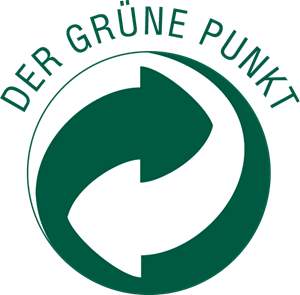 |
Fig. 5 Der Grüne Punkt (The Green Dot) [12.]
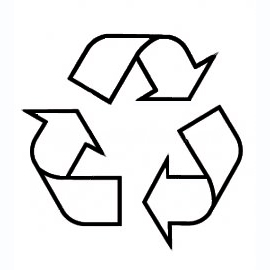
Fig. 6. Mobius Loop ISO [13.]
Another well-known symbol in the waste management industry is the Mobius Loop. This symptom is the predominate symbol used in North America to identify materials with recycling potential. Based off of the infinity sign, the Mobius loop denotes the symbolic closing of the product life cycle loop. Unlike the Der Grüne Punkt, [12.] the Mobius Loop recycling symbol to depict materials that hold recycling potential and, does not denote an actual market or capacity to recycling a given material in any given system. This lack of concordance between the symbology and the waste management processing system creates confusion on the consumer level as well as increases contamination levels in post consumer recyclables. Plastic lead acid battery case can be labeled with a Mobius Loop symbol denoting the potential recyclability of the case. However, the local waste management system would consider a lead acid battery hazardous waste and any lead acid battery erroneously placed in with recyclable materials by a consumer would create dangerous working conditions for sanitation workers and any workers sorting materials at a materials recovery facility.
3.2 Transportation of Dangerous Goods (Canada)
In Canada, the movement, shipping and transportation of dangerous materials is a federally regulated by Transport Canada under the Transportation of Dangerous Goods Act. [11.] The act governs logistical constraints including tracking and movement of goods. A well-defined pictogram and placarding system is used to categorize and label materials to simplify identification of hazards. Hazardous materials moved in Canada must adhere to these standards. The TDG system makes quick visual identification of materials simple and straightforward for material handling across the shipping chain. Lead acid batteries are classified as Class 8 corrosive while lithium and lithium ion batteries are classified as Class 9. [11.]
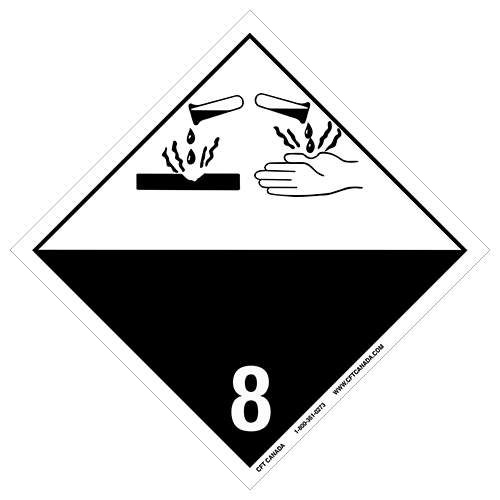 |
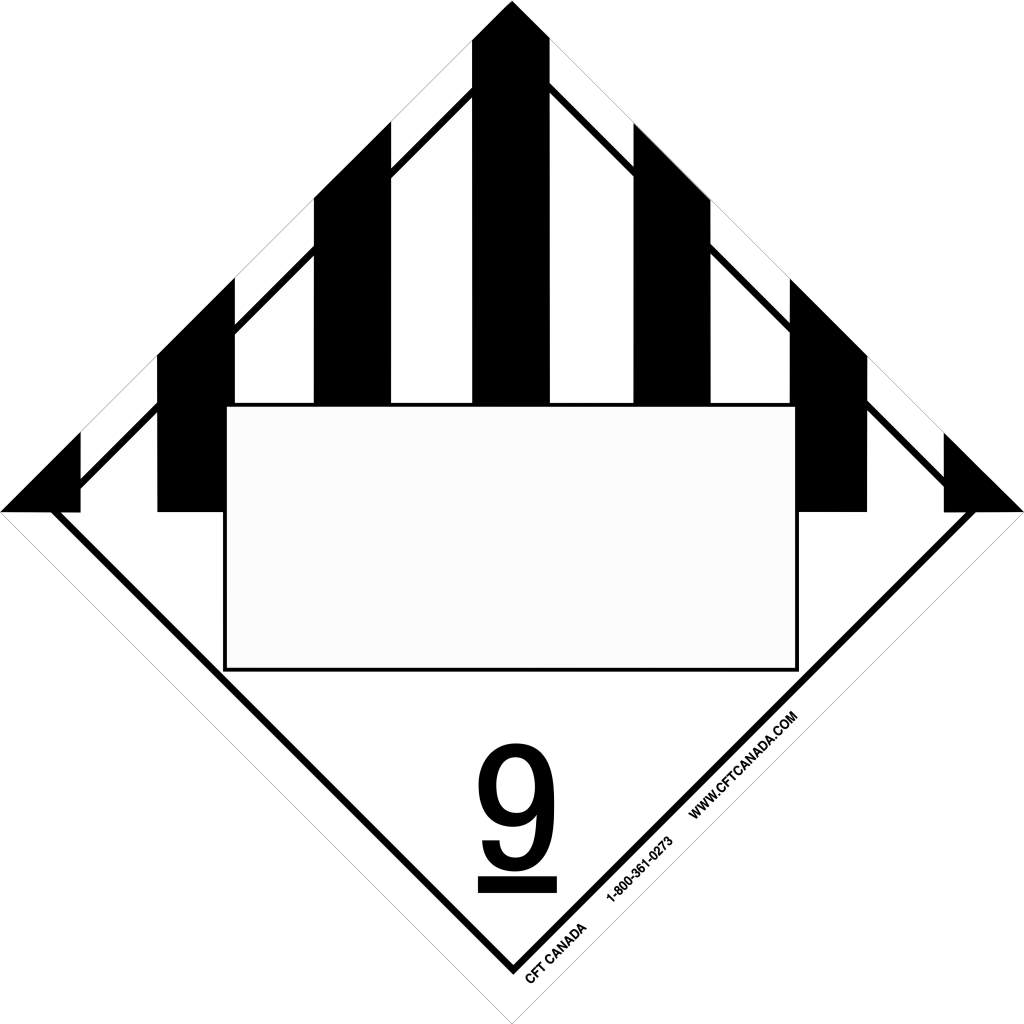 |
| Class 8
Corrosive |
Class 9
Miscellaneous Products, Substances or Organizms |
Fig. 7 Canadian TDG label Examples – Transport Canada [11.]
3.3 Stewardship Ontario Battery Incentive Program
Stewardship Ontario [26.] is a not for profit organization operating in the province of Ontario responsible for the funding of product life cycle management, including waste reduction and recycling programs ensuring responsible end of life management for consumer products. Product producers are held finically accountable for goods that enter the market place, ensuring that the cost of end of life management of goods is fiscally accounted for.
At the time of writing, the Orange Drop battery recycling incentive program is operated by Stewardship Ontario focuses on consumer level dry cell batteries. Fees are paid by the manufacturer when the cell enters the consumer market, thus creating funding for end of life waste management. The funding structure covers the costs associated with collection facilities and the associated infrastructure needed to ensure collection of hazardous materials.
4. Electric Vehicle Industry and Secondary Uses of EV batteries
Electric vehicles are currently occupying a niche sector of the overall automobile market. Recent announcement by automobile manufactures such as Volvo (July 2017) to move towards only producing a combination of BEV and PHEV vehicles mark the first step in EVs moving into the mainstream auto sector. As more automobile manufactures move towards electrifying their offerings to consumers, demand for EV batteries will dramatically increase. With currently available manufacturing technologies, useful life for EV and PHEV batteries is estimated at 8 to 10 years (USEPA) Foster (2014) [9.] estimated that by 2032, the recycling and recovery market will need to have the capacity to manage over 3,000,000 end of life lithium ion cells and batteries.
4.1 Battery Repurposing
Post vehicle use EV batteries present a unique management dilemma. It is estimated by that as of 2017, over 30,000 electric vehicles are on the road in Canada. Fig. [9.] Increasing numbers of EVs are entering service as passenger vehicles, however, a comprehensive method for the end of life management for their battery systems has yet to be fully implemented. Research is focusing in secondary applications for these batteries, with stationary energy storage being one of the prime technological focuses. [4.[
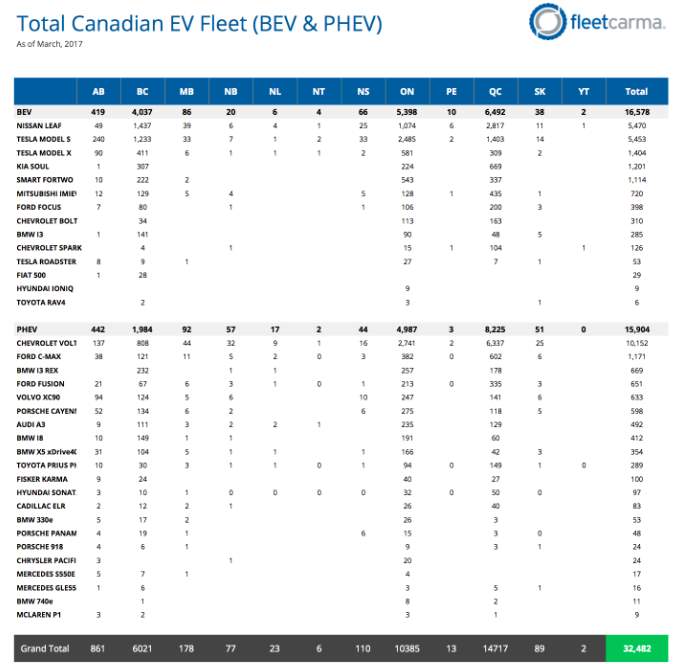
Fig. 8 Total Canadian EV Fleet – Fleetcarma 2017
Automotive battery packs are comprised of multiple cells combined together in series to form a pack which is then managed electronically through an on board battery management system. [4.] The ability to rebuild a battery pack by changing out a single failed cell within a battery pack allows for a lower cost option over replacing the entire battery pack. Experimental research is currently under technical consideration to re-lithiate used cells using a low every process. This has seen some preliminary success on a test scale [15.] with the hopes of being able to redeploy failed EV cells directly back into vehicular EV use. Cells can also be removed from EV use for reasons other than cell failure. Motor vehicle accidents are typical case in this instance. Unlike the simple removal of a lead acid SLI battery from a gasoline powered vehicle, EV batteries require trained technicians [10.] to remove cells which is often problematic after an accident. Having a systematic evaluation process to assess over all battery condition is necessary prior to returning post accident EV batteries to service.
Post vehicle use lithium batteries present a unique opportunity for the electrical utility sector. Lithium battery based energy storage units can be assembled from batteries that are no longer useful in vehicle applications. The industry standard warranty period for EV and PHEV batteries is 8 years accounting for typical vehicular life cycle application.[1.] Past the 8-year benchmark, EV batteries reliability becomes less certain. It is at this point that repurposing these cells into secondary uses becomes potentially feasible. Batteries are considered past their useful vehicle utilization once they reach Estimates are that post vehicle EV batteries have the potential to be useful in stationary energy storage systems for an additional 10 years. [1.] One of the biggest challenges presented by battery repurposing is the ability to quickly and accurately analyze the condition of a battery. [24.] Extending the lifecycle of an EV battery into a secondary use lowers its net environmental impact.
4.2 Nissan – Green Charge Networks
As an early developer of EV technology, Nissan Motors introduced its fully electric passenger car the LEAF (Leading Environmentally-friendly Affordable Family car) in 2010. The LEAF is the worlds best selling electric vehicle selling over 178,000 units globally by 2015. [19. ] Nissan offers an 8 year warranty on the service life of LEAF batteries in Canada.
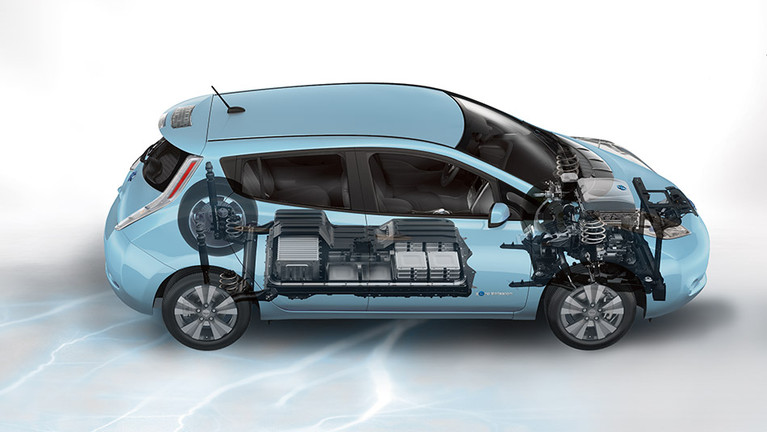
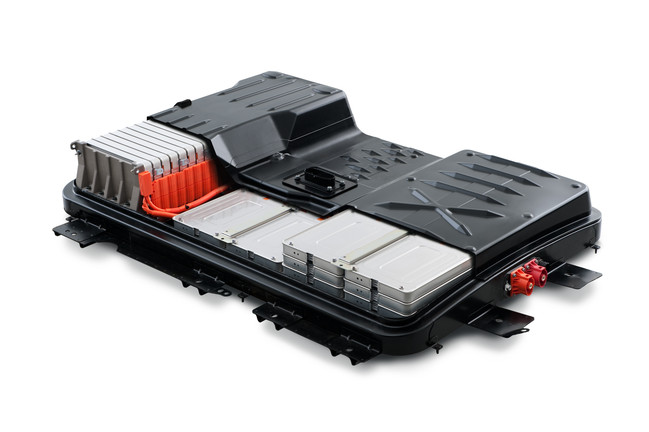
Fig. 9 Nissan LEAF (left) and Nissan LEAF battery pack (Nissan Motor Corp. [19.]
Nissan Motors partnered Green Charge Networks in 2015 with a mandate to capitalize on the potential to develop stationary battery storage systems from its Nissan LEAF EV batteries once they have fulfilled their useful life in passenger vehicles. [19.] Nissan had conducted behind the meter energy storage pilot projects prior to funding the Green Charge startup. Green Charge networks aims to re-purpose end of life Nissan Leaf EV batteries into stationary behind meter energy storage applications. Green Charge estimates that up to 70% battery capacity is left in these batteries after their useful life in EV applications is met allowing them to be re-deployed into secondary applications. With an estimated 80,000 units in annual sales in the US, with Nissan estimates that the majority of end of life LEAF batteries are suitable for secondary life energy storage applications. Given the closed loop potential of capturing known material batteries from one vehicle manufacturer, Green Charge has the potential to produce commercially viable energy storage systems. Stationary energy storage systems are a critical component within the future smart electrical grid provided much needed energy smoothing and load leveling of renewable energy sources such as wind and solar power.
5. Standardization for Recycling and Material Recovery
5.1 Labeling systems in the battery recovery industry
In Europe, the Batteries Directive 2006/66/EC and Regulation (EU) 1103/2010 requires all consumer batteries to meet strict labeling standards. The standard governs the color, size, location on cell of material handing symbol as well as the specification for heavy metals. In North America, however, battery labeling is an ad hoc system governed by each jurisdiction. While voltage and use type are clearly labeled by the manufacturer, the material content for waste management is neither standardized nor clearly labeled. The labeling system used in the consumer level battery industry lacks consistency as evidenced below in a sampling of battery symbols photographed for the purpose of this study.
Fig. 10 Battery Label Samples
| Battery label samples | Battery Type |
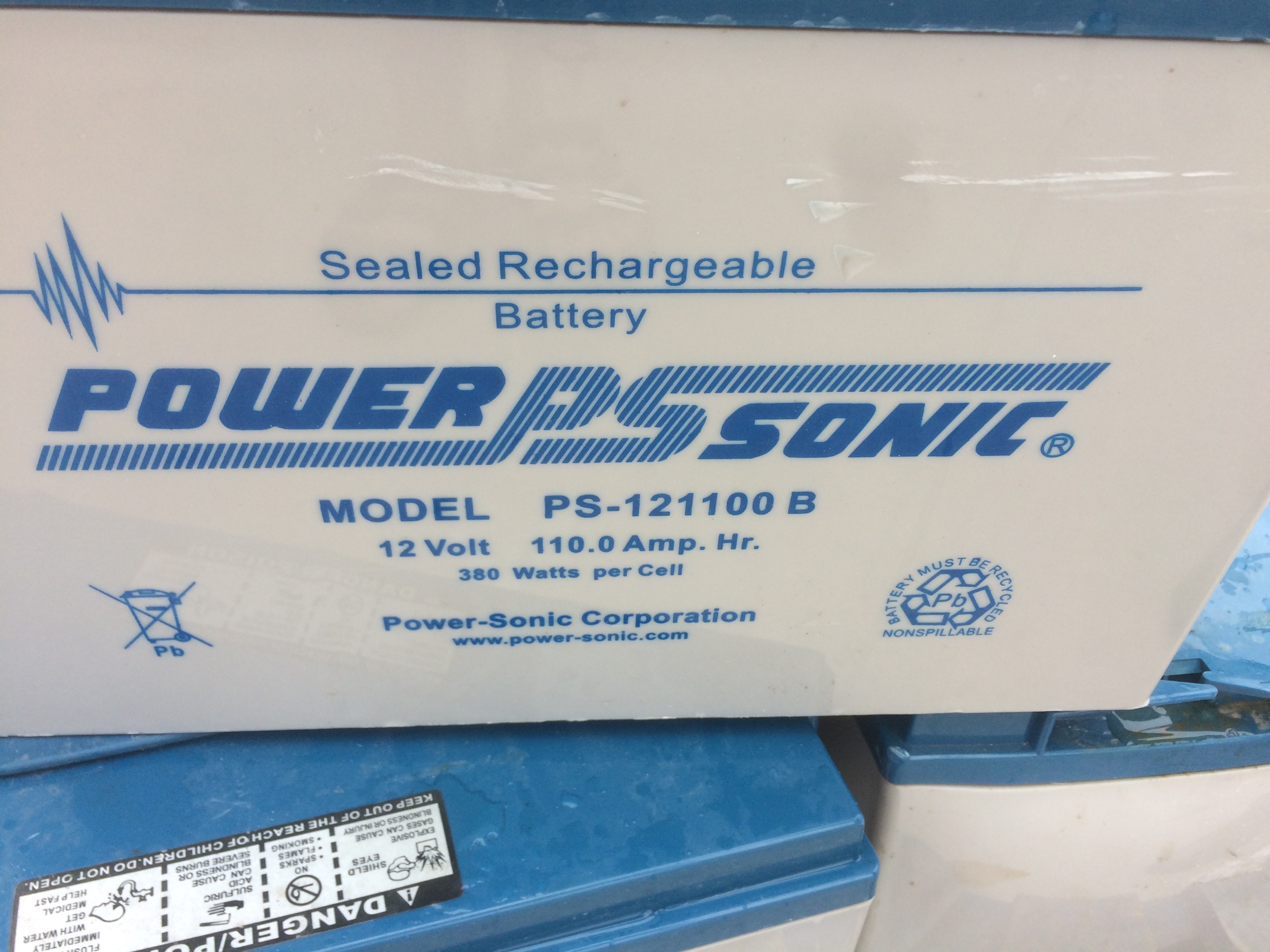 |
Sealed lead acid battery used in |
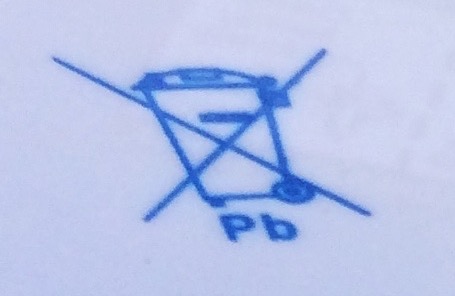 |
Lead Acid battery
|
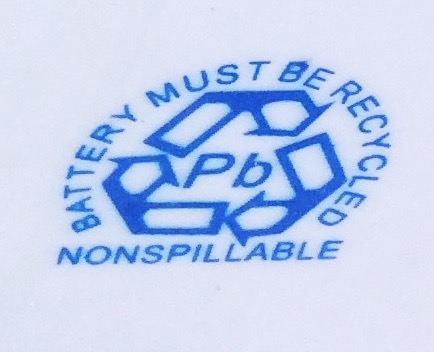 |
Lead Recycling Label |
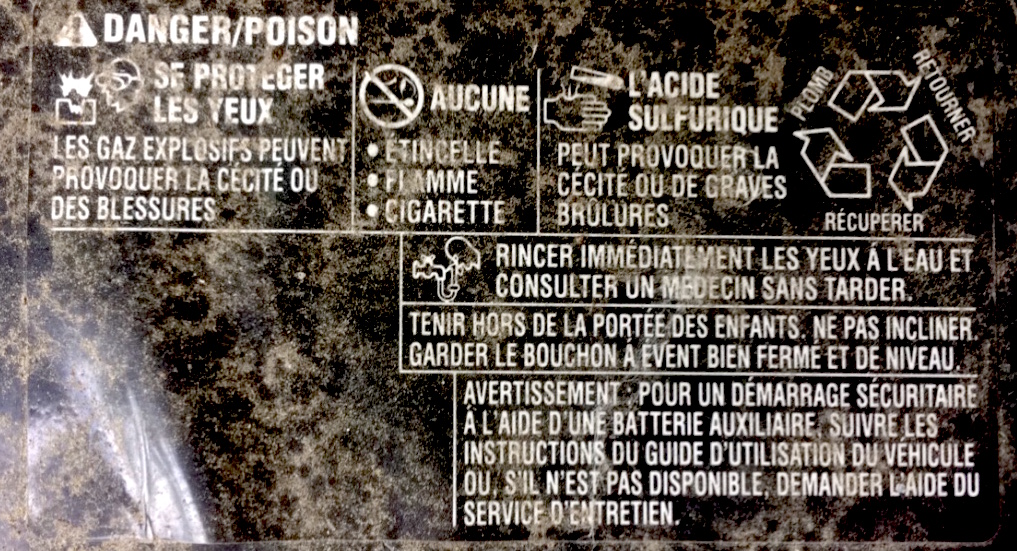 |
Lead acid automotive battery
|
 |
Lithium cell phone battery |
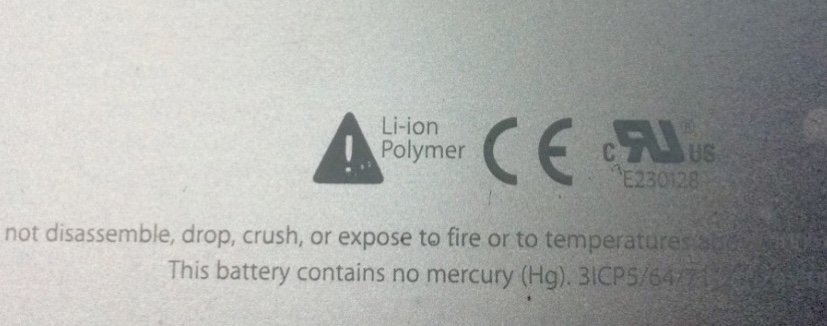 |
Lithium laptop battery |
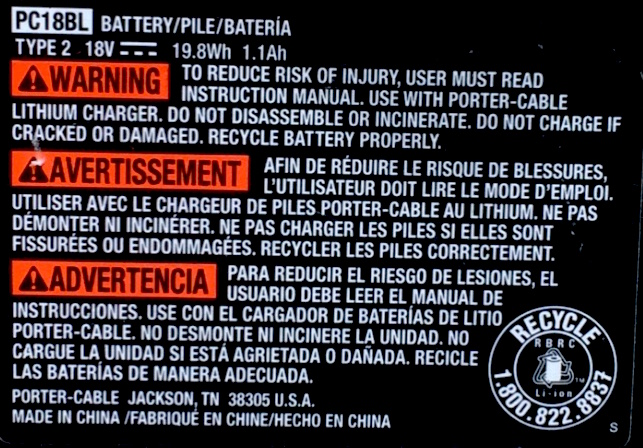 |
Lithium power tool battery |
5.2 RFID
Radio frequency identification devices, known as RFID, is a technology that allows small, low cost, tags to be placed on goods. The tag is capable of storing comprehensive detailed information about an item such as manufacture date, specific details about manufacturing materials as well as lifecycle use information. The tag information can be updated at any point to revise information as needed. RFID opens up a technical solution for identification of spent lithium cells and opens a door for automation in the sorting and identification of spent batteries. RFID was examined within the scope of improving process flow for battery recycling. [2.]
Battery manufactures could implement RFID technology at point of manufacture for BEV and PHEV cells, [10.] tagging these batteries with critical management information. Once the cell or battery pack is taken out of automotive use, the cell information use and cycle data could be uploaded from the individual vehicle’s battery management system to the RFID tag. Having this type of critical data on the past history and use of a cell could aid engineers and waste management professionals in the decision process of where each cell moves next within the spent cell management matrix. Cells meeting the cycle and usage criteria for secondary use in battery storage systems could easily be separated from cells that have critical issues making them unfit for secondary use. Cells that are unfit for any process other than recycling, having critical data about the cell can streamline the recycling process allowing for the automated of sorting and separation by chemical composition at material recycling facilities.
6. Technical Considerations
Current lead acid the battery recycling technology approaches a closed loop recycling system with over 99% of lead in this type of cell being recycled into new products.[16.] The smelting method by which lead is recovered is unique to the lead acid battery and is not shared with the lithium cell. The high material recovery is a direct result of thigh lead levels in these batteries and the high commodity value of lead. A system based off this existing recycling network cannot be applied to lithium batteries due to the complex technology inherent within EV batteries.
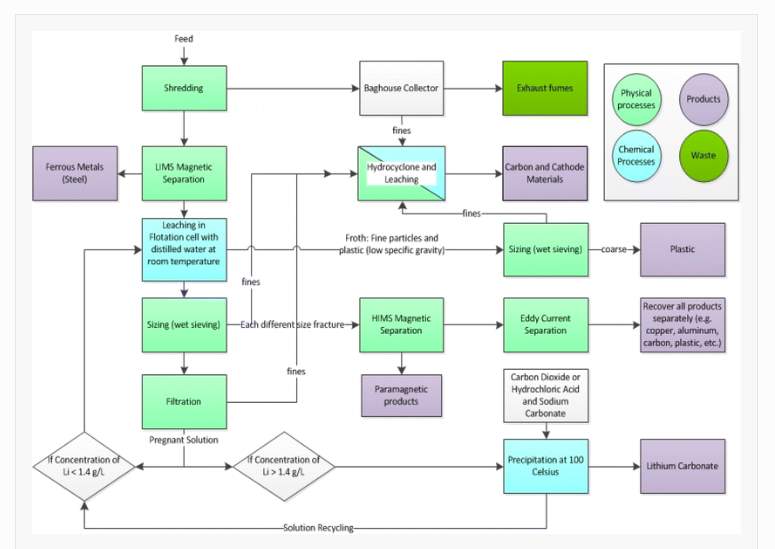
Fig. 10 Proposed Recycling Process Flow – Marinos et al 2015 [14.]
Material recovery from any form of battery is currently a labour intensive process hindered by a lack of a standardized process for efficient identification of battery type. [17.] Even with lead acid batteries, post consumer sorting and separation by type is a complex process as is demonstrated in Fig. 11 below.
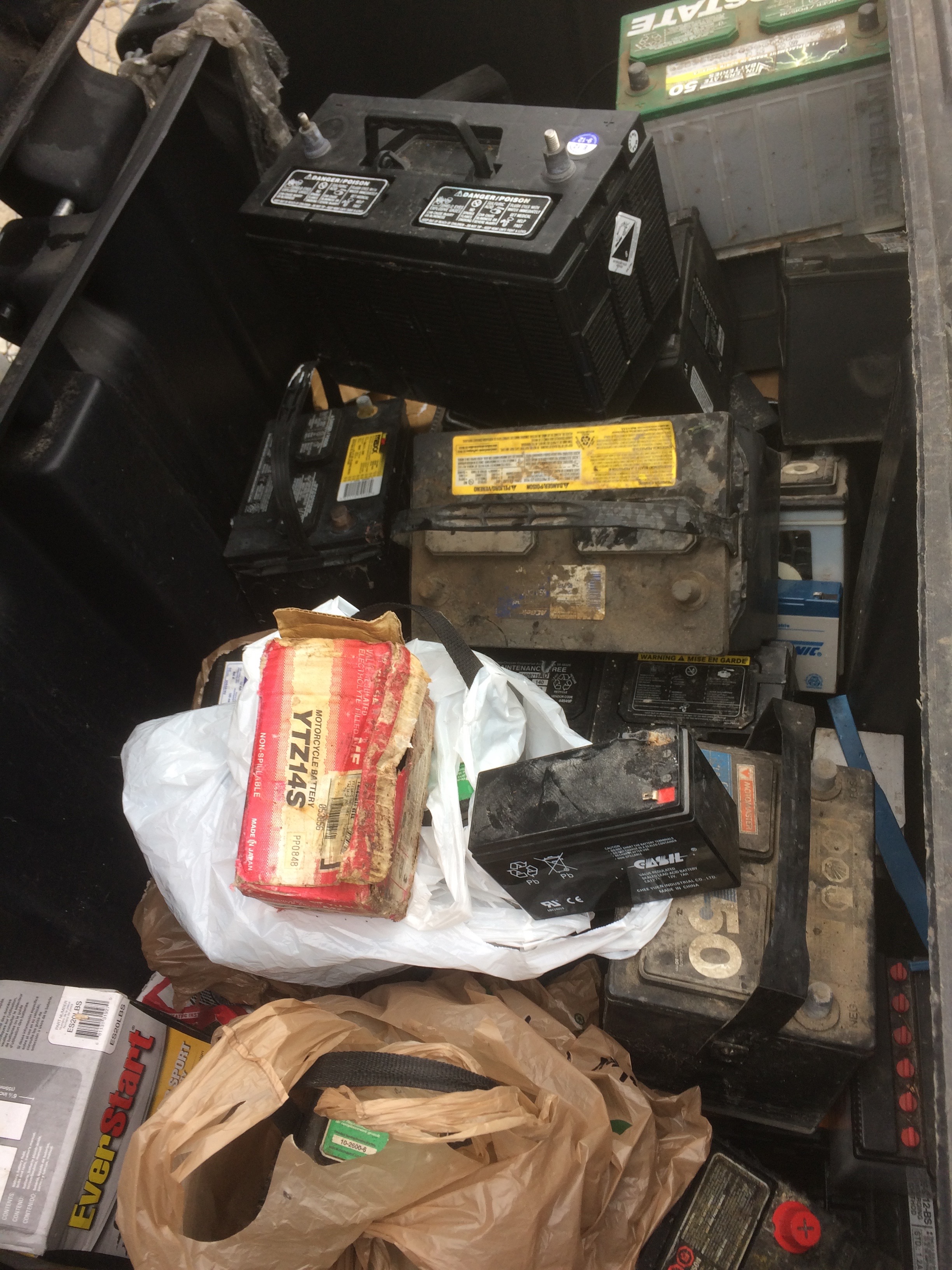

Fig. 11 Mixed spent lead acid batteries of various sizes and voltages C. Cook 2017
BEV and PHEV batteries present a complex challenge beyond the management structure of lead acid batteries. Due to the unstable nature of lithium, handing, and transporting spent batteries of this nature is a risky proposition, especially when uncertain labeling is considered. [27.] Spent lithium batteries from consumer electronics that are “recycled” are incinerated in cement kilns and the slag is used an amendment in concrete manufacturing. While the cement industry sees lithium as a positive improvement to the manufacturing process by improving the qualities of the cement they produce, cement kiln use of lithium limits is future use. At this time (2017), lithium recycling has only been demonstrated at a laboratory scale using a hydrometallurgical process to recapture lithium from spent cells.[7.] At the demonstration scale, lithium recovery is cost prohibitive.
The potential to recover lithium from post consumer cells both from consumer electronics and from EV vehicle applications, creates the potential to extend and augment raw lithium reserves. Reducing raw lithium material inputs has the potential to reduce carbon emissions from extracting lithium in remote, geologically sensitive locations. [10.] Developing a lithium capture process flow, also allows for the capture and reuse of other metals used in EV manufacture such as cobalt, manganese, copper and aluminum. The most promising method at this point in time (2017) is the chemical leaching process, which focuses on recovering L1COO2 and repurposing it.
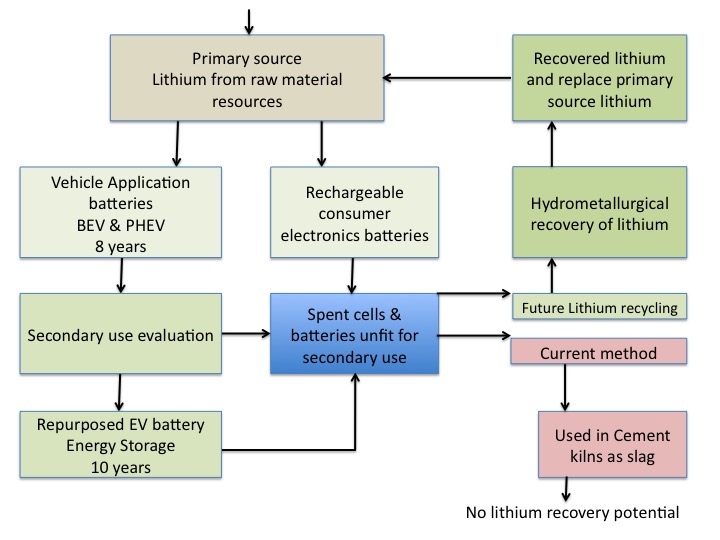
Fig.12 Lithium Process Flow
The rapidly changing nature of battery research requires a very flexible recycling system that can accommodate changing battery chemistry types. As battery technology becomes actively designed specifically for automotive use, the industry will see advances that are unaccounted for in todays EV market. One such example was announced in early 2017. The lithium ion battery inventor John Goodenough announced [3.] a highly stable new technology using a solid state lithium glass battery that charges more rapidly than current lithium ion batteries and has a much higher cycle life which could, in theoretical applications, drastically extend expected EV battery life.
DISCUSSION AND CONCLUSION
Lithium ion battery technology has rapidly advanced in application from its invention in the early 1990s. Allowing for light, small batteries, lithium ion cells have revolutionized the way we live our lives allowing for sophisticated, easily recharged personal electronics. Lithium battery technology is poised to make a similar impact on automobiles, enabling BEV and PHEV to gain wide acceptance into the passenger vehicle marketplace. As electric vehicles further penetrate the passenger vehicle market, there will be a resultant increase in the quantity of spent electric vehicle batteries entering the waste management system.
Early adopters manufacturers of electric vehicle technologies have employed the use of innovative batteries shifting the paradigm of passenger transport from gasoline-powered vehicles to PHEV and BEV powered vehicles. The potential for repurposing and remanufacturing automotive batteries that are at the end of their vehicle usability opens potential for innovative secondary uses. Nissan has acknowledged the potential of secondary uses for end of life batteries in their BEV LEAF by investing in the clean tech startup Green Charge. Given the EV battery market is in its infancy, the real impact EV batteries entering the waste management infrastructure has yet to be seen. The secondary EV battery market does not mitigate the need for an environmentally responsible system for recycling system for lithium ion cells.
Current waste management legislation in most jurisdictions in North America has a non-standardized identification system for batteries managed within the solid waste stream. Even with secondary use of EV potentially extending battery life well past the original manufacture specifications, there will be a future need to effectively manage end of life cells. As the EV market matures past the early adopter stage, the demand on world lithium resources will dramatically increase. Having an effective recycling system in place for lithium will help close the material recovery loop. Currently spent lithium batteries from consumer electronics are often added to cement kilns in the concrete industry. While improving the quality of the concrete produced, this application of lithium limits future the future availability of a relatively scares metal resource with limited global stores. Further research and development lithium capture technology to ensure flexibility within the recycling process is needed to help bolster lithium demand from primary resources.
References
[1.] L. Ahmadi et al, “A cascaded life cycle: reuse of electric vehicle lithium-ion battery packs in energy storage systems,” The International Journal of Life Cycle Assessment, vol. 22, pp. 111-124, 2017.
[2.] C. R. Binder et al, “Smart Labels for Waste and Resource Management: An Integrated Assessment,” Journal of Industrial Ecology, vol. 12, pp. 207, 2008.
[3.] M. H. Braga, N. S. Grundish,a A. J. Murchisona and J. B. Goodenough “Alternative strategy for a safe rechargeable battery” Energy Environ. Sci., 2017, 10, 331
[5.] G. Crabtree, E. Kócs and L. Trahey, “The energy-storage frontier: Lithium-ion batteries and beyond,” MRS Bulletin, vol. 40, (12), pp. 1067-1078, 2015.
[6.] “Electric Vehicle Sales Staticstics Q. 1 2017” http://www.fleetcarma.com/electric-vehicle-sales-canada-q1-2017/
[7.] R. Faria et al, “Primary and secondary use of electric mobility batteries from a life cycle perspective,” Journal of Power Sources, vol. 262, pp. 169-177, 2014.
[8.] Five Amazing Uses for Recycled Tires. (n.d.). https://nerc.org/news-and-updates/blog/nerc-blog/2015/11/20/five-amazing-uses-for-recycled-tires
[9.] M. Foster et al, “Feasibility assessment of remanufacturing, repurposing, and recycling of end of vehicle application lithium-ion batteries,” Journal of Industrial Engineering and Management, vol. 7, pp. 698-715, 2014.
[10.] L. Gaines, “The future of automotive lithium-ion battery recycling: Charting a sustainable course,” Sustainable Materials and Technologies, vol. 1-2, pp. 2-7, 2014.
[11.] Government of Canada; Transport Canada; Safety and Security Group, Transportation of Dangerous Goods. (2017, April 28). Transportation of Dangerous Goods. Retrieved July 16, 2017, from http://www.tc.gc.ca/eng/tdg/safety-menu.htm
[12.] B. M. Houston-Waesch, “Germany’s Green-Dot Program Draws Fire,” Wall Street Journal, 1993.
[13.] “Background information on Recycling Symbols” ISO/IEC JTC1/SC2/WG2 N2342 2001-04-02
[13.] N. Jiao and S. Evans, “Secondary use of Electric Vehicle Batteries and Potential Impacts on Business Models,” Journal of Industrial and Production Engineering, vol. 33, (5), pp. 348-354, 2016.
[14.] Knox, A. “An Overview of Incineration and EFW Technology as Applied to the Management of Municipal Solid Waste (MSW)“ University of Western Ontario 2005
[15.] Lead poisoning and health. (n.d.). Retrieved July 16, 2017, from http://www.who.int/mediacentre/factsheets/fs379/en/
[16] E. Lloyd, T. Whitehouse and Commission for Environmental Cooperation (Montréal, Québec). Hazardous Trade?: An Examination of US-Generated Spent Lead-Acid Battery Exports and Secondary Lead Recycling in Canada, Mexico, and the United States 2013.
[17] D. Marinos and B. Mishra, “An Approach to Processing of Lithium-Ion Batteries for the Zero-Waste Recovery of Materials,” Journal of Sustainable Metallurgy, vol. 1, pp. 263-274, 2015.
[18.] Mishra , A. “Cleantech Aims to Capitalize on Energy Storage and Integrated Energy Solutions.” Renewable Energy World, 2017
[19. ] “Nissan and 4R Energy partner with Green Charge Networks for commercial energy storage featuring second-life electric vehicle batteries” Nissan News Wire 2015 http://nissannews.com
[20.] D. A. Notter et al, “Contribution of Li-ion batteries to the environmental impact of electric vehicles,” Environmental Science & Technology, vol. 44, pp. 6550, 2010.
[21.] J. Ordoñez, E. J. Gago and A. Girard, “Processes and technologies for the recycling and recovery of spent lithium-ion batteries,” Renewable and Sustainable Energy Reviews, vol. 60, pp. 195-205, 2016.
[22] A. Pehlken, S. Albach and T. Vogt, “Is there a resource constraint related to lithium ion batteries in cars?” The International Journal of Life Cycle Assessment, vol. 22, pp. 40-53, 2017.
[23.] Rahman, A. and Afroz, R. “Lithium battery recycling management and policy.” Int. J. Energy Technology and Policy, Vol. 13, No. 3, pp.278-291
[24.] K. Richa et al, “Environmental trade-offs across cascading lithium-ion battery life cycles,” The International Journal of Life Cycle Assessment, vol. 22, (1), pp. 66-81, 2017.
[25. ] “Science for Environment Policy”: European Commission DG Environment News Alert Service, edited by SCU, The University of the WestofEngland,Bristol.
[26.] “Orange Drop” Program Stewardship Ontario stewardshipontario.ca/stewards-orangedrop/
[27.] Taylor, P. “When an Electric Car Dies, What Will Happen to the Battery?” https://www.scientificamerican.com/article/lithium-ion-batteries-hybrid-electric-vehicle-recycling/ 2009, September 14
[28.] “The Trouble with Lithium 2” (PDF). Meridian International Research. 2008. Retrieved 29 September 2010.
[29.] “This Month in Physics History.” (n.d.). Retrieved July 16, 2017, https://www.aps.org/publications/apsnews/200603/history.cfm
[30.] U.S. Department of the Interior U.S. Geological Survey MINERAL COMMODITY SUMMARIES 2017. January 19, 2017.
[31.] X. Wang, G. Gaustad and C. W. Babbitt, “Targeting high value metals in lithium-ion battery recycling via shredding and size-based separation,” Waste Management, vol. 51, pp. 204-213, 2016.
[32.] X. Wang. “Managing End-of-Life Lithium-Ion Batteries: An Environmental and Economic Assessment,” , ProQuest Dissertations Publishing, 2014.
[33.] X. Zeng, J. Li and N. Singh, “Recycling of Spent Lithium-Ion Battery: A Critical Review,” Critical Reviews in Environmental Science and Technology, vol. 44, pp. 1129-1165, 2014.
Cite This Work
To export a reference to this article please select a referencing stye below:
Related Services
View allRelated Content
All TagsContent relating to: "Electronics"
Electronics regards the science and technology involved in the development of electrical circuits and electronic devices and equipment that use them.
Related Articles
DMCA / Removal Request
If you are the original writer of this dissertation and no longer wish to have your work published on the UKDiss.com website then please:




